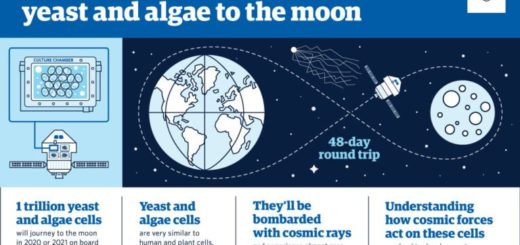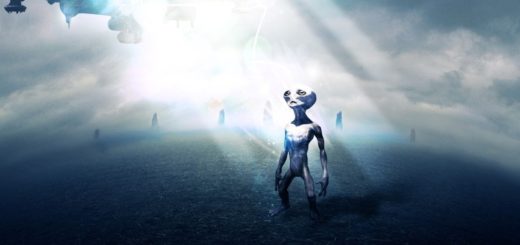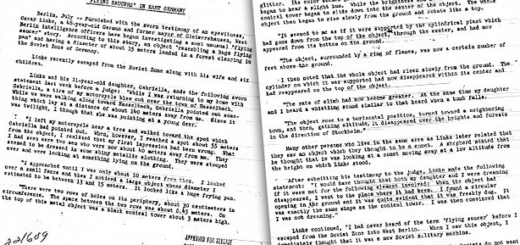Dr. Thomas Harvey – The Pathologist Who Stole Einstein’s Brain
– Albert Einstein, one of the recognized and well-known scientists of the century died on April 17,1955 at Princeton Hospital in New Jersey. Before Einstein passed away, he left specific instructions that he didn’t want his brain or his body to be studied.
He wanted his remains to be cremated, but he didn’t want to be worshipped and said his ashes should be secretly scattered in order to discourage idolaters.
Einstein died early in the morning and he would have been devastated to learn about what happened to his brain later. Dr. Thomas Harvey, a pathologist at Princeton Hospital was on duty on the evening of April 17, the day when Einstein passed away, and he stole the great scientist’s brain.

Dr. Harvey performed an autopsy and he removed Einstein’s brain without permission.
“I just knew we had permission to do an autopsy, and I assumed that we were going to study the brain, ” Dr. Harvey said. Reporters who investigated this case learned that Dr. Harvey had no legal right to remove and keep Einstein’s brain for himself and he never received any permission to do an autopsy.
“When the fact came to light a few days later, Harvey managed to solicit a reluctant and retroactive blessing from Einstein’s son, Hans Albert, with the now-familiar stipulation that any investigation would be conducted solely in the interest of science,” Brian Burrell writes in his book Postcards from the Brain Museum.
This did not happen. On the contrary, Dr. Harvey had not only stolen the genius’ brain, but also removed his eyeballs which he gave to Henry Abrams, Einstein’s eye doctor. They remain to this day in a safe deposit box in New York City, and are frequently rumored to be poised for the auction block.
“Having his eyes means the professor’s life has not ended. A part of him is still with me,” Abrams said. He too had no legal permission to obtain or keep the eyes.
Dr. Harvey refused to return the brain and within months he was dismissed from the Princeton Hospital.
There are several theories why Dr. Harvey stole Einstein’s brain and we may never be certain what prompted him to do what he did. One possibility is that wanted to reveal the source of Einstein’s extraordinary discovery and simple make a great scientific discovery. This would have been difficult for him to accomplish because he was not a brain specialist and his understanding of the brain did not extend beyond the postmortem diagnosis of disease, atrophy, or injury.
It has also been suggested that Dr. Harvey removed the brain at the request of his mentor, Harry Zimmerman, who was Einstein’s personal physician. Various reporters have suggested that Dr. Harvey may have been inspired by Oskar Vogt’s study of Lenin’s brain, and he had the vague idea that cytoarchitectonics might shed some light on Einstein’s case.
We simply do not know why he removed the brain, but he took it home, carved into 240 pieces and preserved in celloidin, a hard and rubbery form of cellulose. He placed the pieces in two jars and stored them in his basement.
Brian Burrell writes in his book Postcards from the Brain Museum, “After [Harvey’s] wife threatened to dispose of the brain, he returned to retrieve it and took it with him to the Midwest. For a time he worked as a medical supervisor in a biological testing lab in Wichita, Kansas, keeping the brain in a cider box stashed under a beer cooler. He moved again, to Weston, Missouri, and practiced medicine while trying to study the brain in his spare time, only to lose his medical license in 1988 after failing a three-day competency exam.
He then relocated to Lawrence, Kansas, took an assembly-line job in a plastic-extrusion factory, moved into a second-floor apartment next to a gas station, and befriended a neighbor, the beat poet William Burroughs. The two men routinely met for drinks on Burroughs’s front porch. Harvey would tell stories about the brain, about cutting off chunks to send to researchers around the world. Burroughs, in turn, would boast to visitors that he could have a piece of Einstein any time he wanted.”
In 1978, Einstein’s brain was rediscovered in Harvey’s possession by American journalist Steven Levy who had been sent by his editor to find the illustrious organ.
Levy eventually tracked the pathologist down to Wichita, Kansas and the journalist wrote later an article, “I Found Einstein’s Brain”, based on his interview with Dr. Harvey.
“I told him, ‘I’m writing a story about Einstein’s brain.’ The first thing he said was: ‘I really can’t help you with that,’” Levy remembers. “He wasn’t eager to talk.”
“He was a somewhat introverted guy, a polite guy,” Levy recalls. “But as the conversation went on, he had a pride that he was doing this study, but he didn’t really have good answers as to why, after almost 25 years, nothing had been published.”
When Levy pressed Harvey to see some pictures of the brain, a strange look came over the doctor’s face. Grinning sheepishly, he stood up, walked behind Levy to the corner of the room, and removed a beer cooler from a stack of cardboard boxes. The bottom box was labelled Costa Cider.
“He reaches in, pulls out these big mason jars,” says Levy. “And there was Einstein’s brain. It was amazing.”
In 2005, on the occasion of the 50th anniversary of Einstein’s death, the 92-year-old Harvey gave interviews regarding the history of the brain from his home in New Jersey.
Harvey died at the University Medical Center at Princeton on April 5, 2007
“Whether he took it for himself, or took it for science – it was hard for people to know which, and that’s what put him in the crosshairs for a lot of people,” said the journalist Michael Paterniti, who met Harvey near the end of his life.
In 2010, Harvey’s heirs transferred all of his holdings constituting the remains of Albert Einstein’s brain to the National Museum of Health and Medicine, in Silver Spring, Maryland, near Washington, D.C including 14 photographs of the whole brain (which is now in fragments).
More recently, 46 small portions of Einstein’s brain were acquired by the Mütter Museum in Philadelphia. The Mütter Museum is one of only two places in the world where we can see pieces of Albert Einstein’s brain. Brain sections, 20 microns thick and stained with cresyl violet, are preserved in glass slides on display in the main Museum Gallery.
Albert Einstein suspected his brain would be examined against his wish. He also knew scientist would not find anything that could shed light on his extraordinary intelligence. Perhaps this was the reason why Einstein said – “Not everything that counts can be counted, and not everything that can be counted counts.”



 Creators of mankind
Creators of mankind Description of “Tall white aliens”
Description of “Tall white aliens” Where they came from?
Where they came from? About hostile civilizations
About hostile civilizations The war for the Earth
The war for the Earth “Tall white aliens” about eternal life
“Tall white aliens” about eternal life Video: “Nordic aliens”
Video: “Nordic aliens” Aliens
Aliens Alien encounters
Alien encounters The aliens base
The aliens base UFO
UFO Technology UFO
Technology UFO Underground civilization
Underground civilization Ancient alien artifacts
Ancient alien artifacts Military and UFO
Military and UFO Mysteries and hypotheses
Mysteries and hypotheses Scientific facts
Scientific facts


















